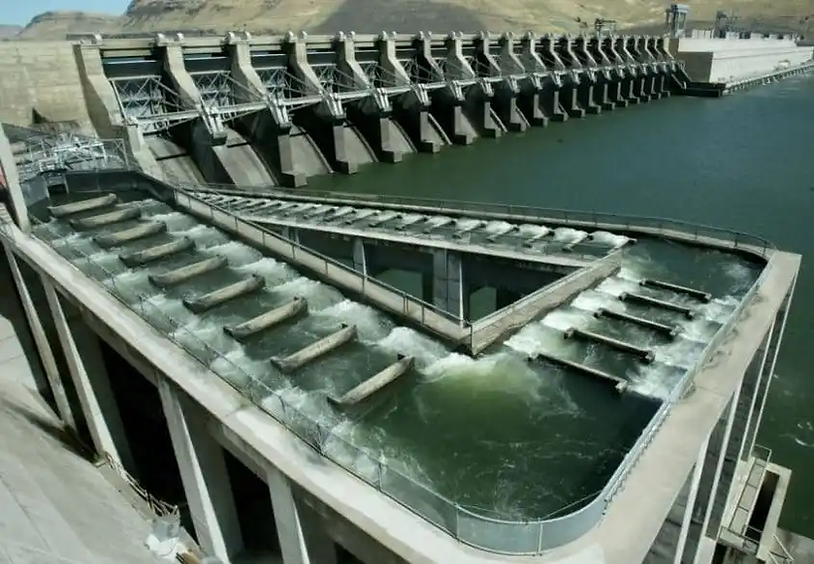By: Tristan Sun
At the base of the Conowingo Dam at the mouth of the Susquehanna River, fish scale a daunting ladder of steel and concrete.
Even before the fabrication of the almost 100-foot-tall dam, the rapids would have pummeled her ancestors. The rocks would have sliced their skin and blackened their flesh. Now, the flesh starts already bruised, battered by the cascade of white water barreling from the dam’s base. The tongue of water directs her towards a metal trough that leads to the reservoir above. She ushers her body against the current.
Next, she must orient herself in the unnaturally still water. She sees a jet of fire overhead – blood, dying. Ten flights still yet to go. She shares this rung with another American shad – a species migrating up rivers from the sea to spawn.
At the top of the ladder, the fish arrive in a reservoir. But with waters too clear and too still to provide cover from predators or oxygen to breathe, fish must bolt to tributaries to spawn. If suitable tributaries are not available, the fish die. After spawning, most offspring asphyxiate or are eaten by predators before finding the ladder leading them downstream to safety.
Worse yet, most adults returning downstream are severely injured, sacrificing their future spawning potential. And in especially low or especially high waters, fish ladders are shut down. With these setbacks, it’s unlikely that the few shad that make it to spawning tributaries arrive at the optimal time of the river’s ecological cycle.











